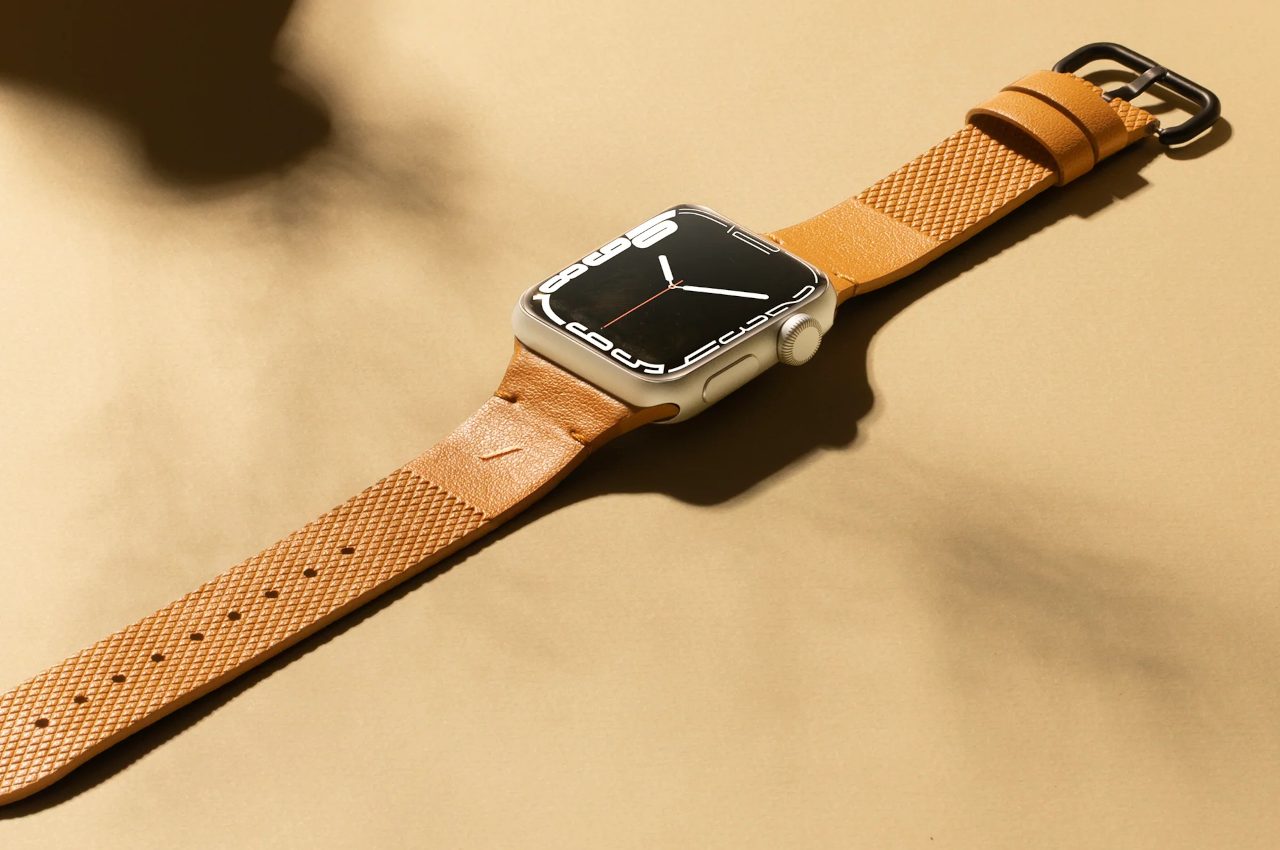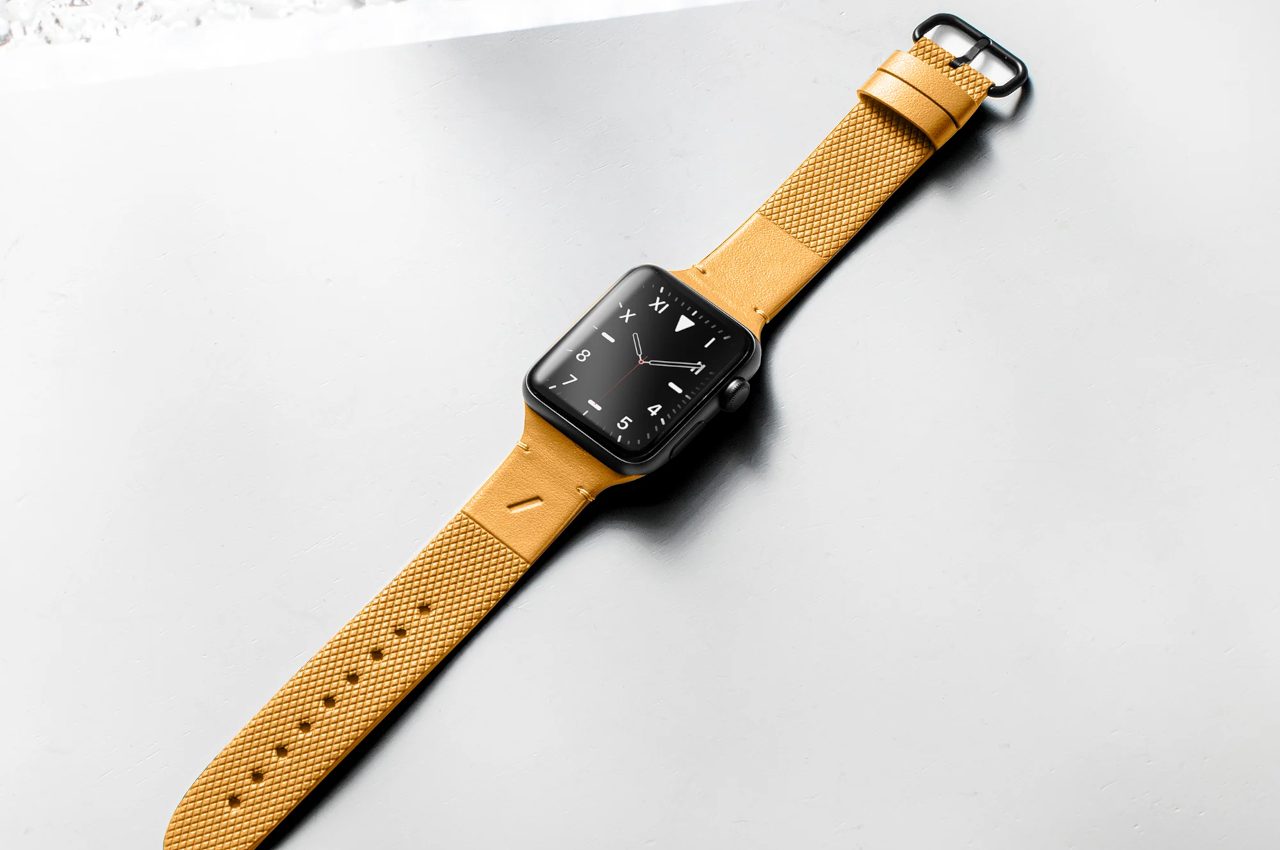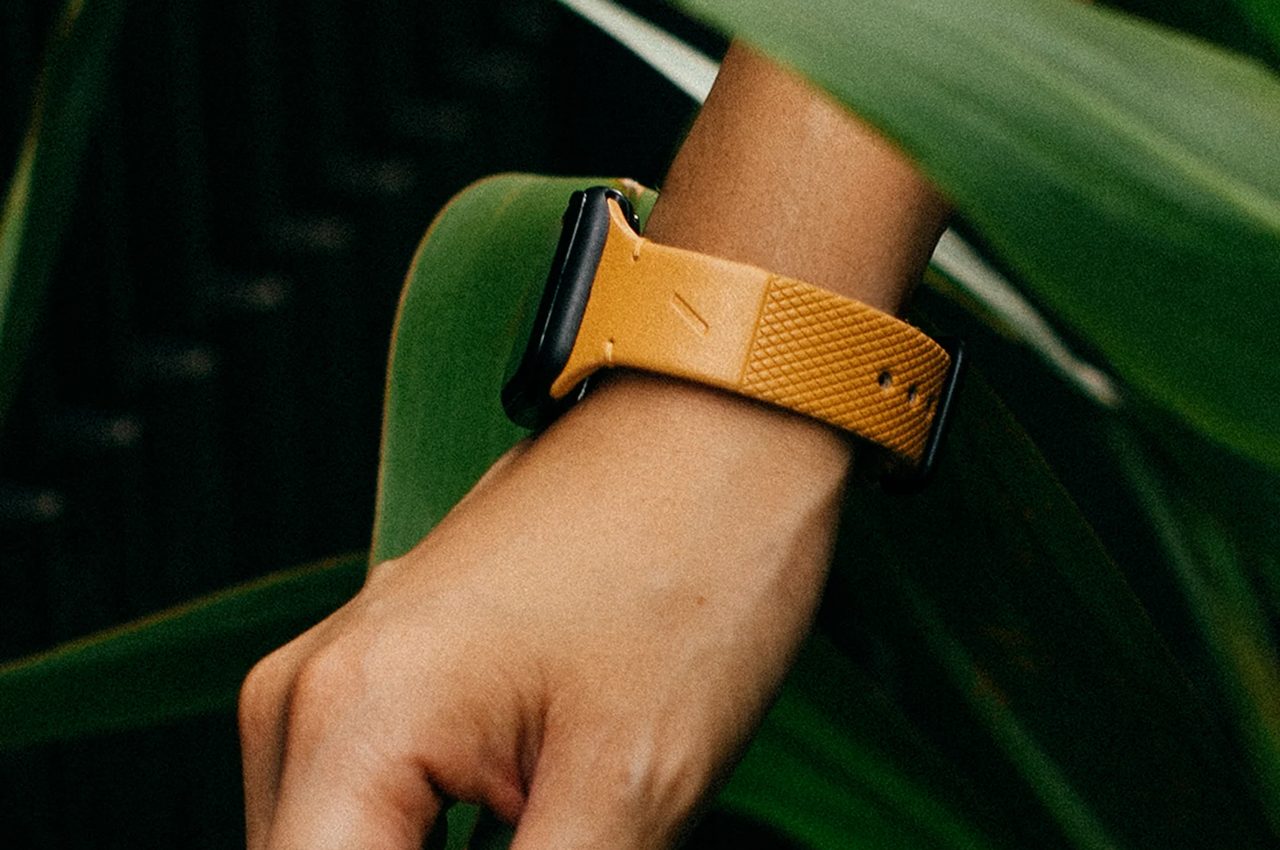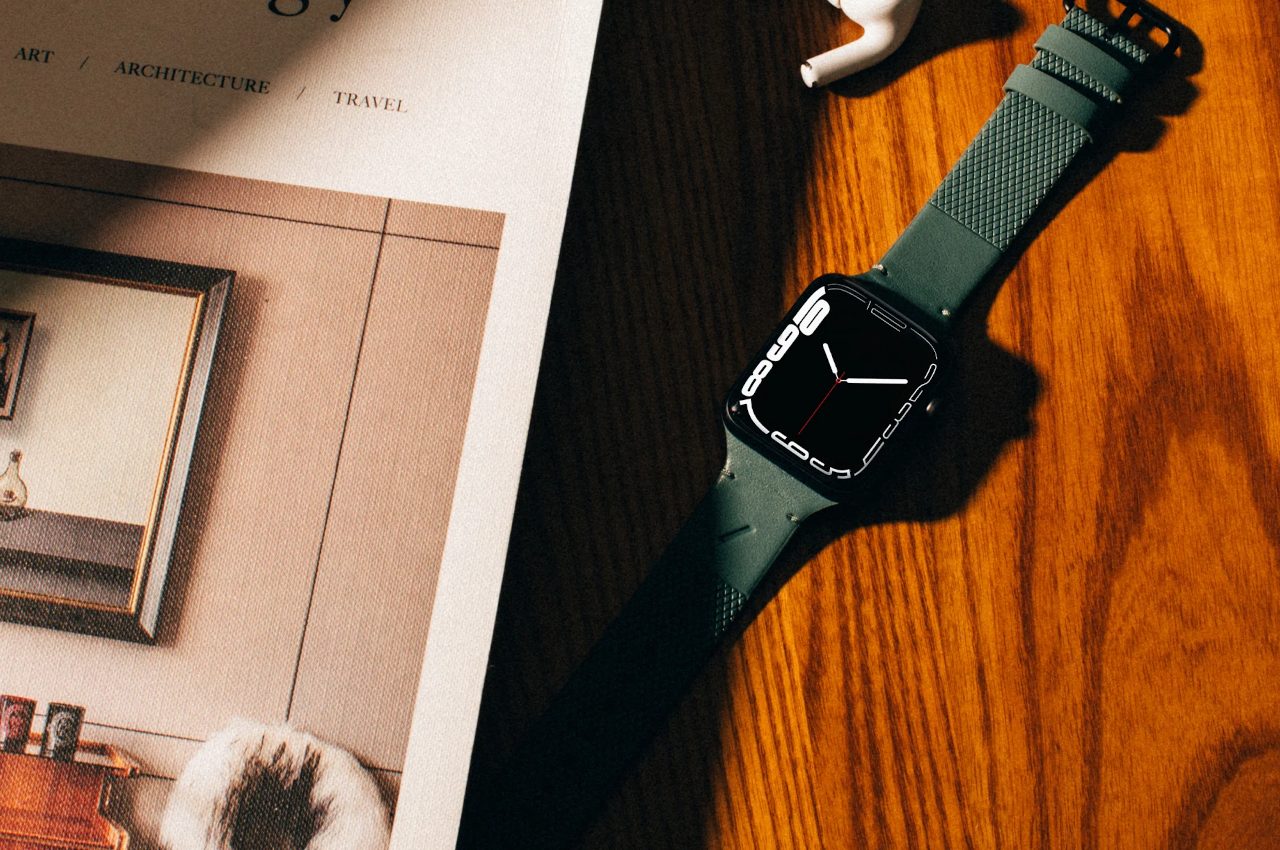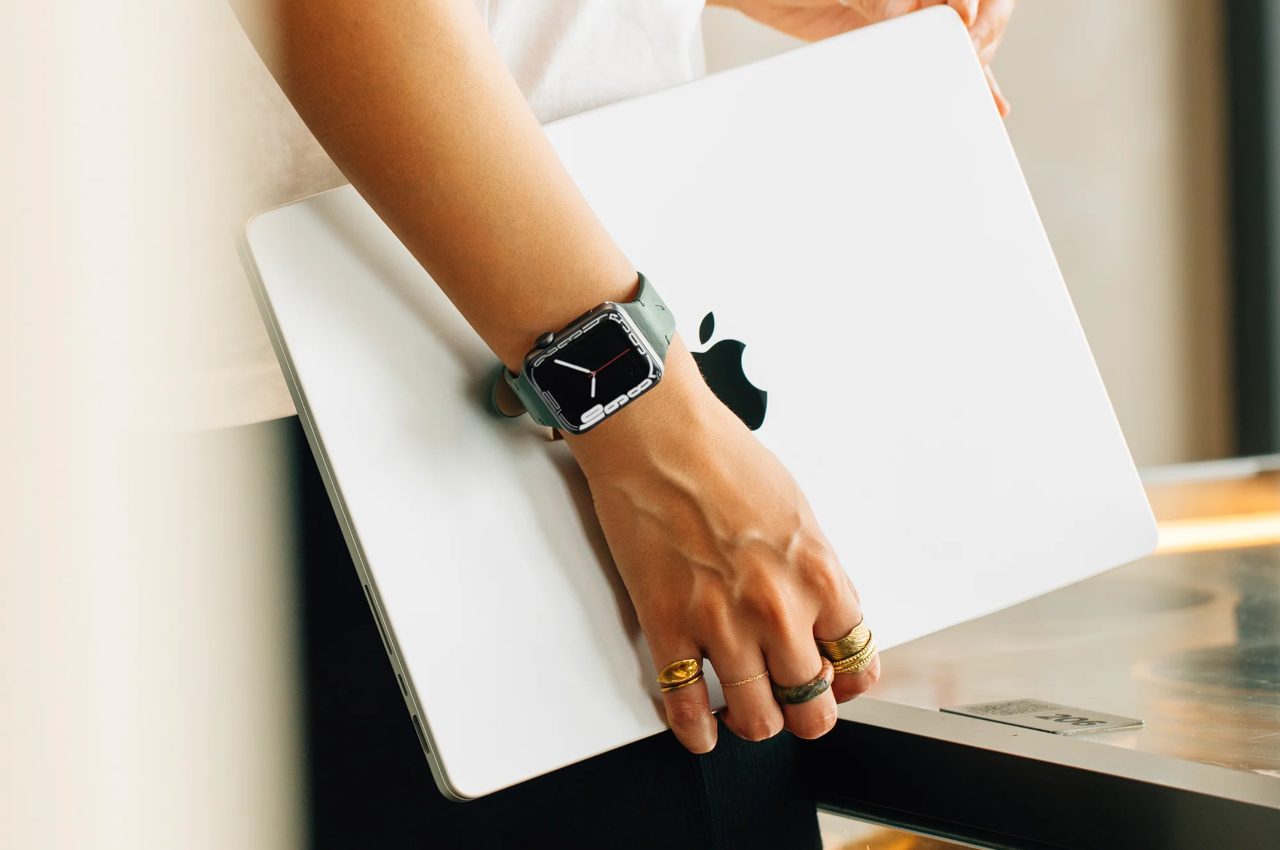
Home scent has spent the last decade in candles and diffusers, often leaning on synthetic fragrance oils and heavy perfume notes that fill a room fast and fade faster. There’s a quiet shift back toward incense now, especially the kind made from ingredients rather than lab blends. Shantivale is a botanical incense brand from Shangri-La, Yunnan, that treats incense as a small architectural gesture instead of a perfumed cloud you spray and forget about.
Shantivale’s core idea is plant-born smoke, not perfume. Each stick is made from ground woods, herbs, and resins, held together with a traditional plant-based binder made from glutinous rice root and Debregeasia orientalis bark. Because even the binder is plant fibre and starch rather than chemical adhesive, the ember burns at a lower, steadier temperature, producing a fine, soft plume instead of thick smoke with sharp edges.
Designer: Shantivale

The sustainability side is straightforward. There are no synthetic fragrance oils or dyes, which means less petrochemical load and less residue floating in the air. The plant-based binder is locally crafted, supporting regional knowledge and reducing reliance on industrial adhesives. The burn is low-smoke, even, and gentle, where the air reads as plants rather than lab-bright perfume. It’s less about masking a space and more about restoring its tone, letting a room feel more like itself.
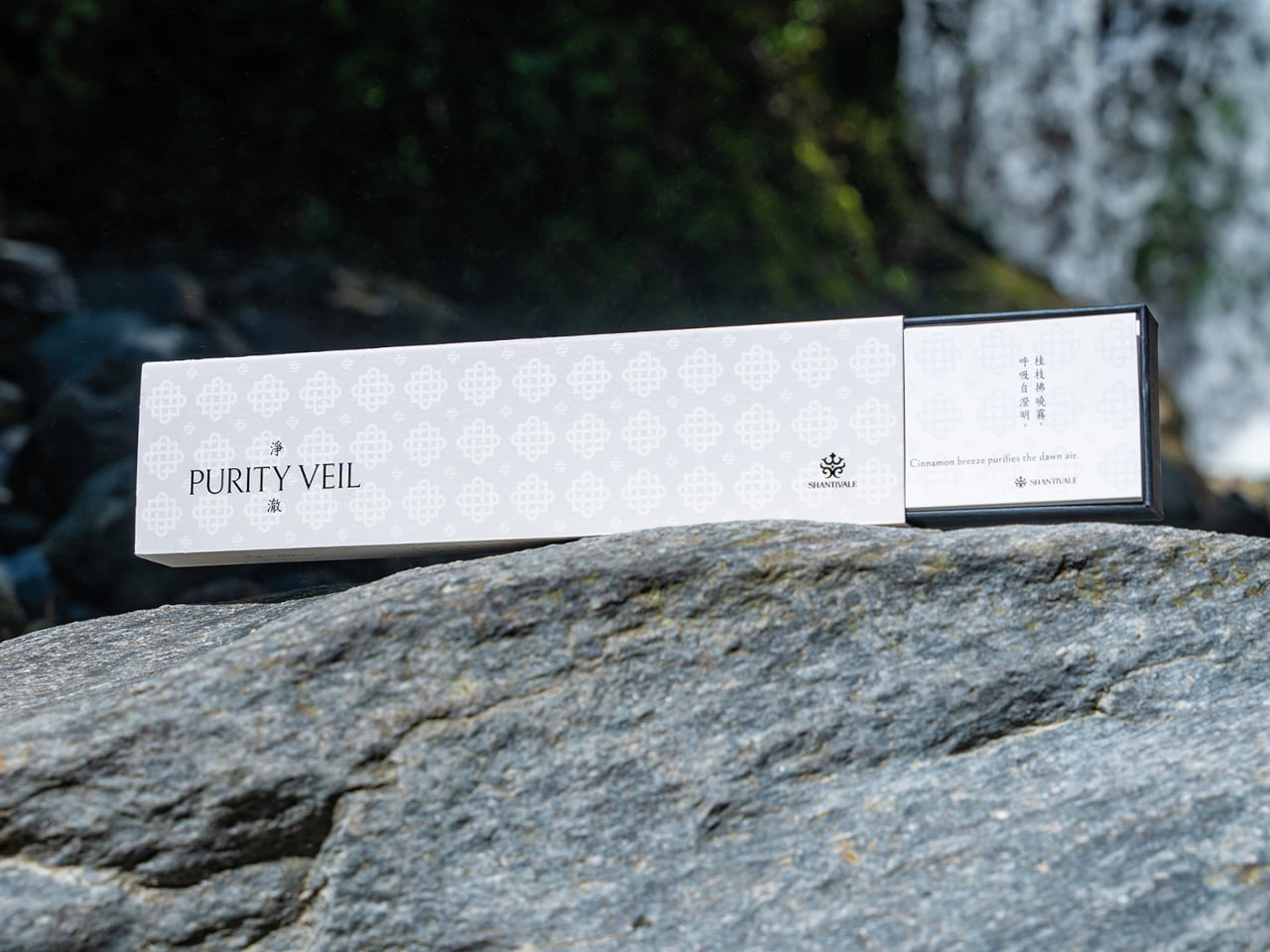
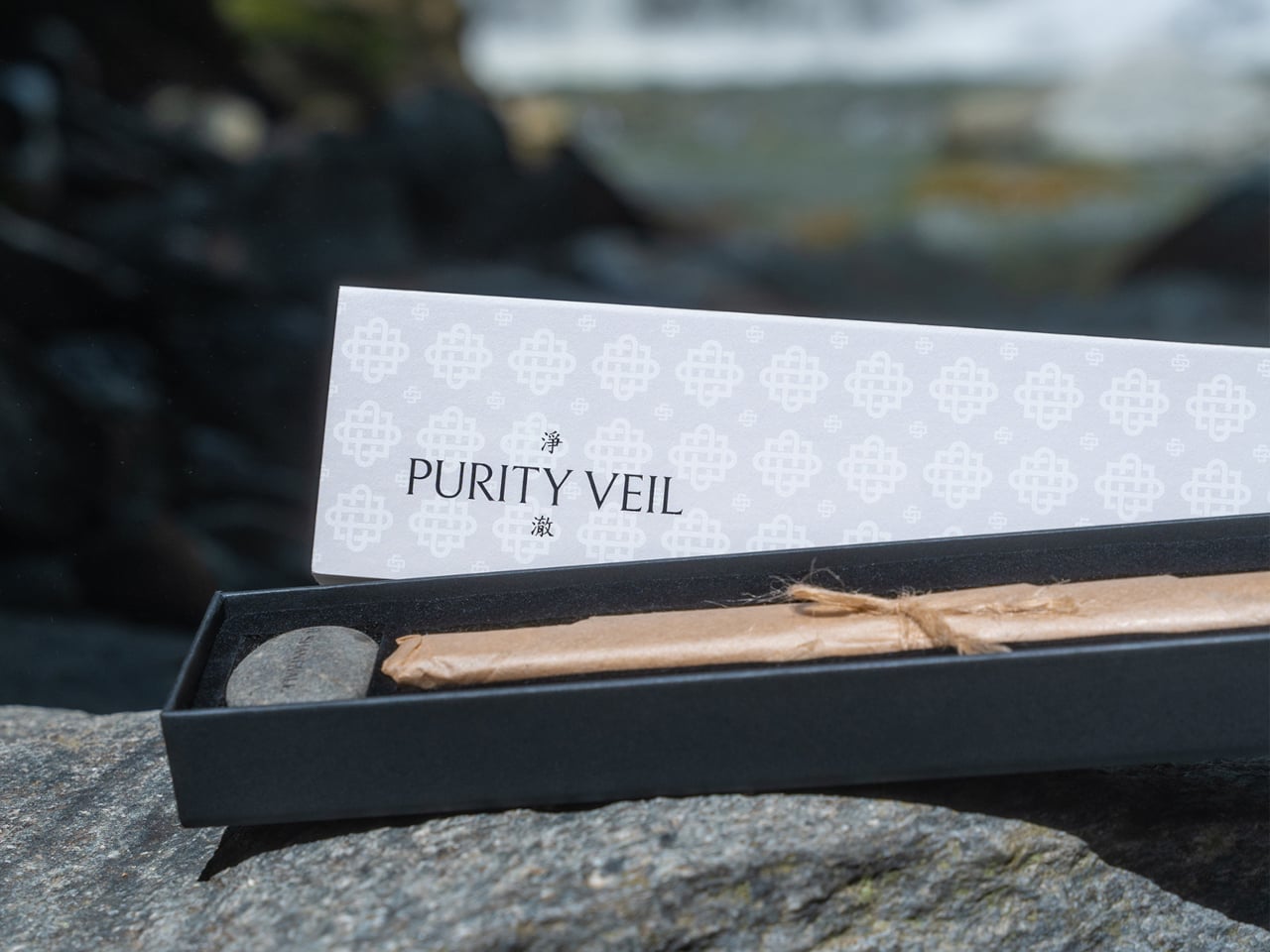
The blends are informed by classical Chinese herb pairing logic, treated as heritage and craft rather than medicine. Cinnamon twig, dryopteris, artemisia, sandalwood, agarwood, poria, ziziphus seed, and polygala root are culturally associated with warmth, clarity, inward calm, and rest. These references explain why the blends behave like distinct states, such as clarity, focus, warmth, and rest, rather than the usual top-heart-base perfume pyramids you get from synthetic candles trying to smell like fifteen different things at once.
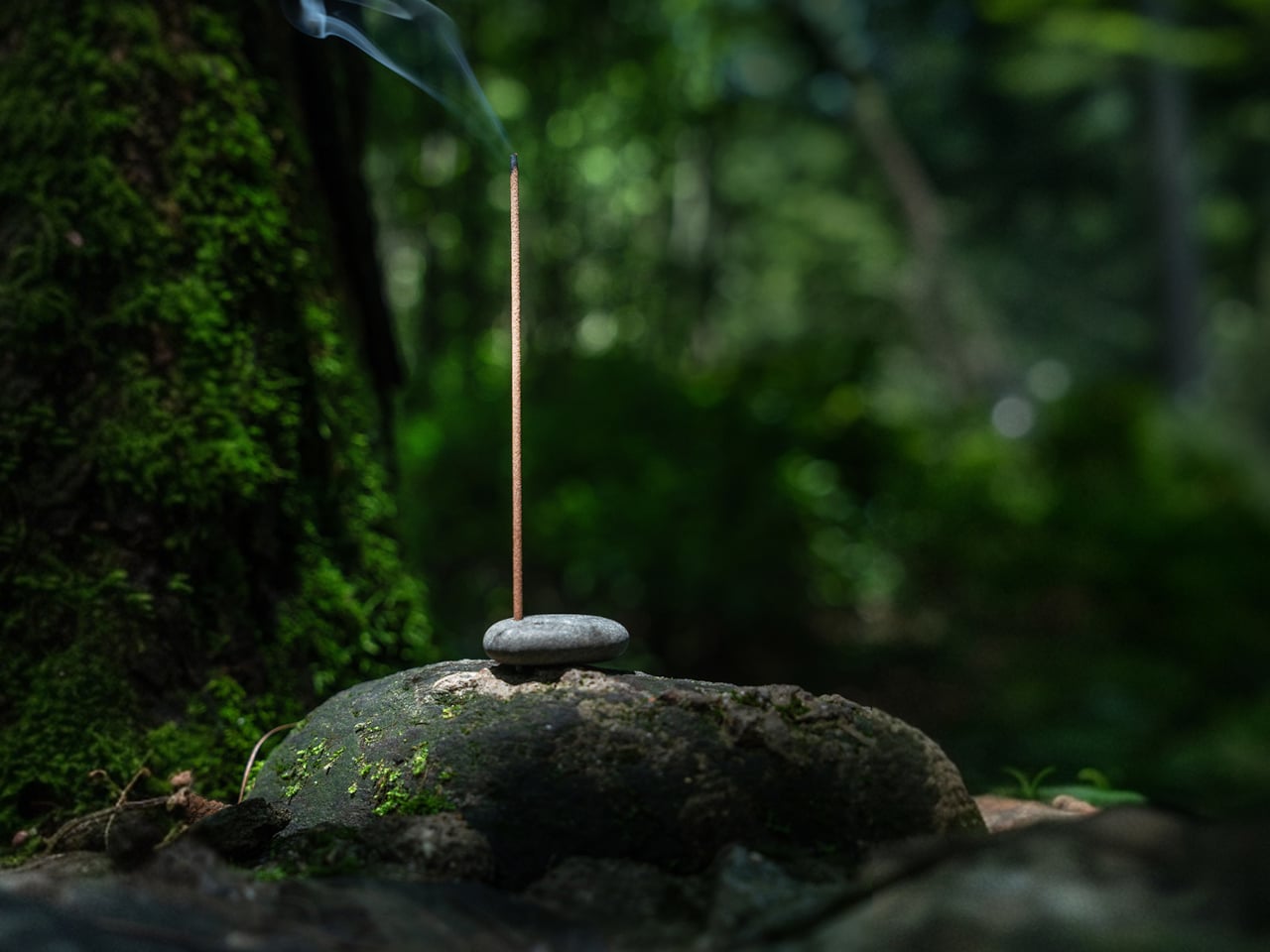
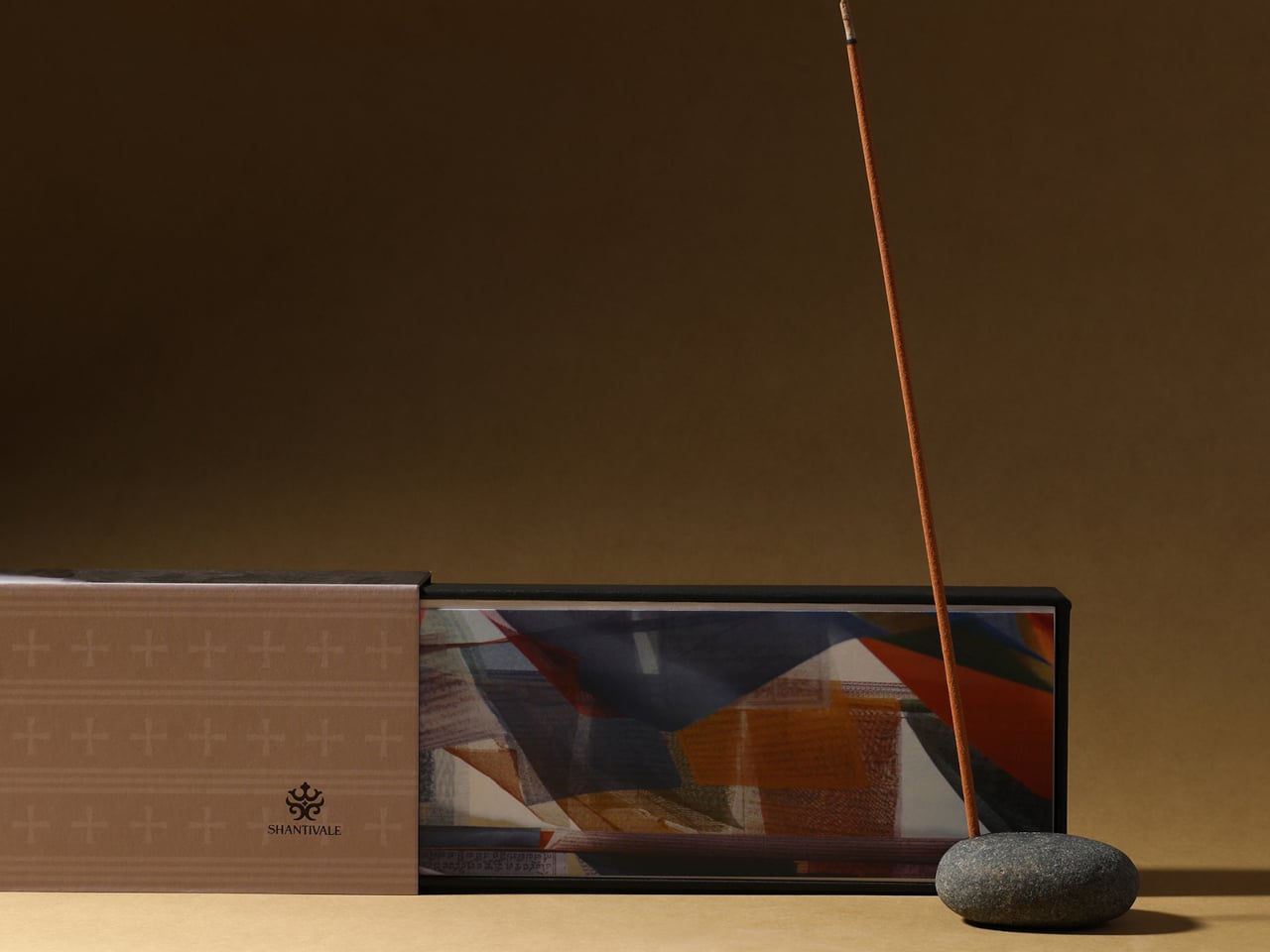
The Tranquil Fivefold kit maps five blends to different moments of the day. Purity Veil behaves like a herbal reset after cooking or between tasks. Dharma Rain is a cooler, contemplative blend for study and focused work. Zen Flow leans warm and inward for meditation or gentle yoga. Cliff Glow is a single-wood cypress stick for rainy windows and unhurried afternoons. Sereni Sleep marks the evening’s descent with grain-warm hush, close and non-intrusive.
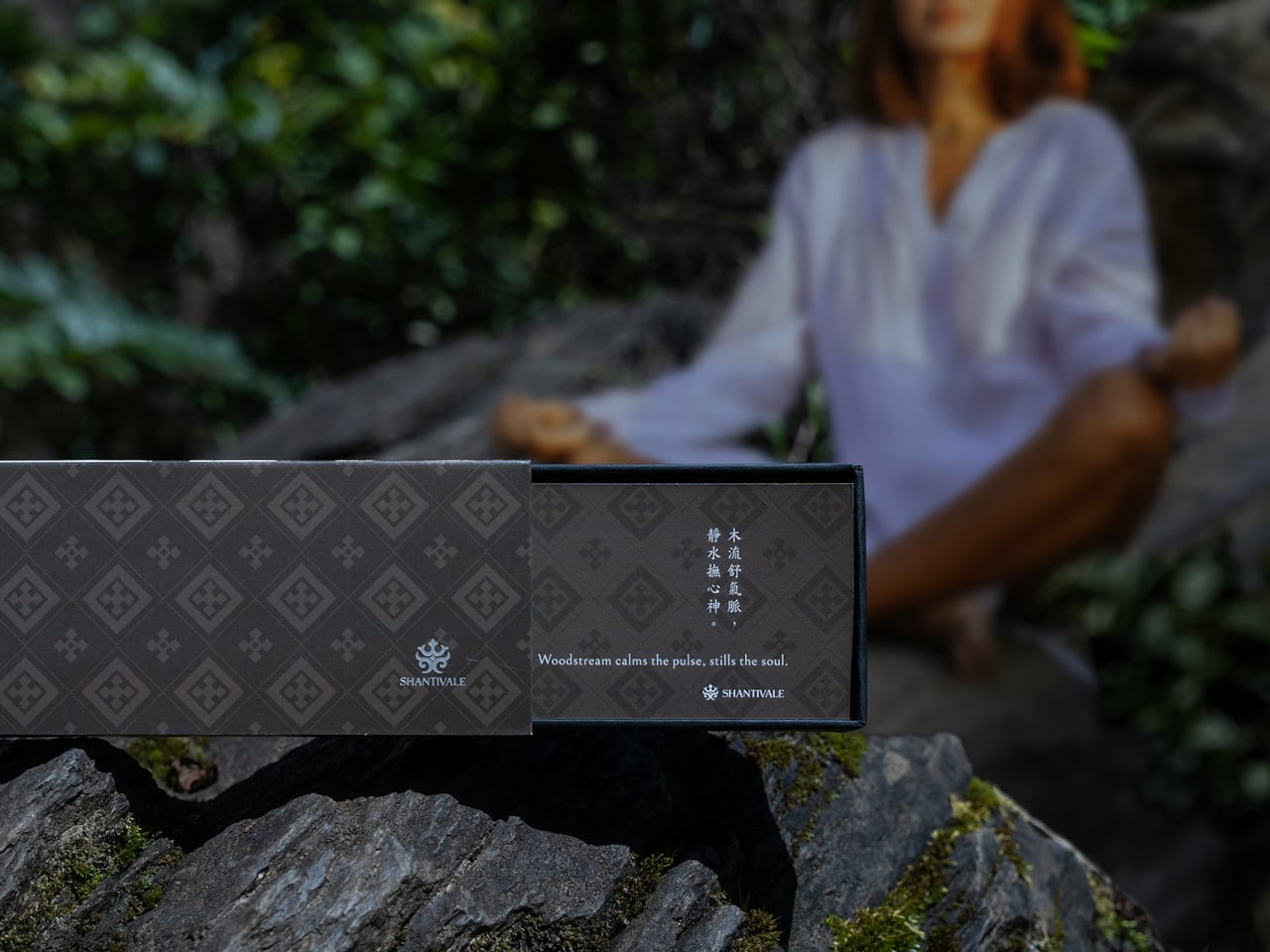
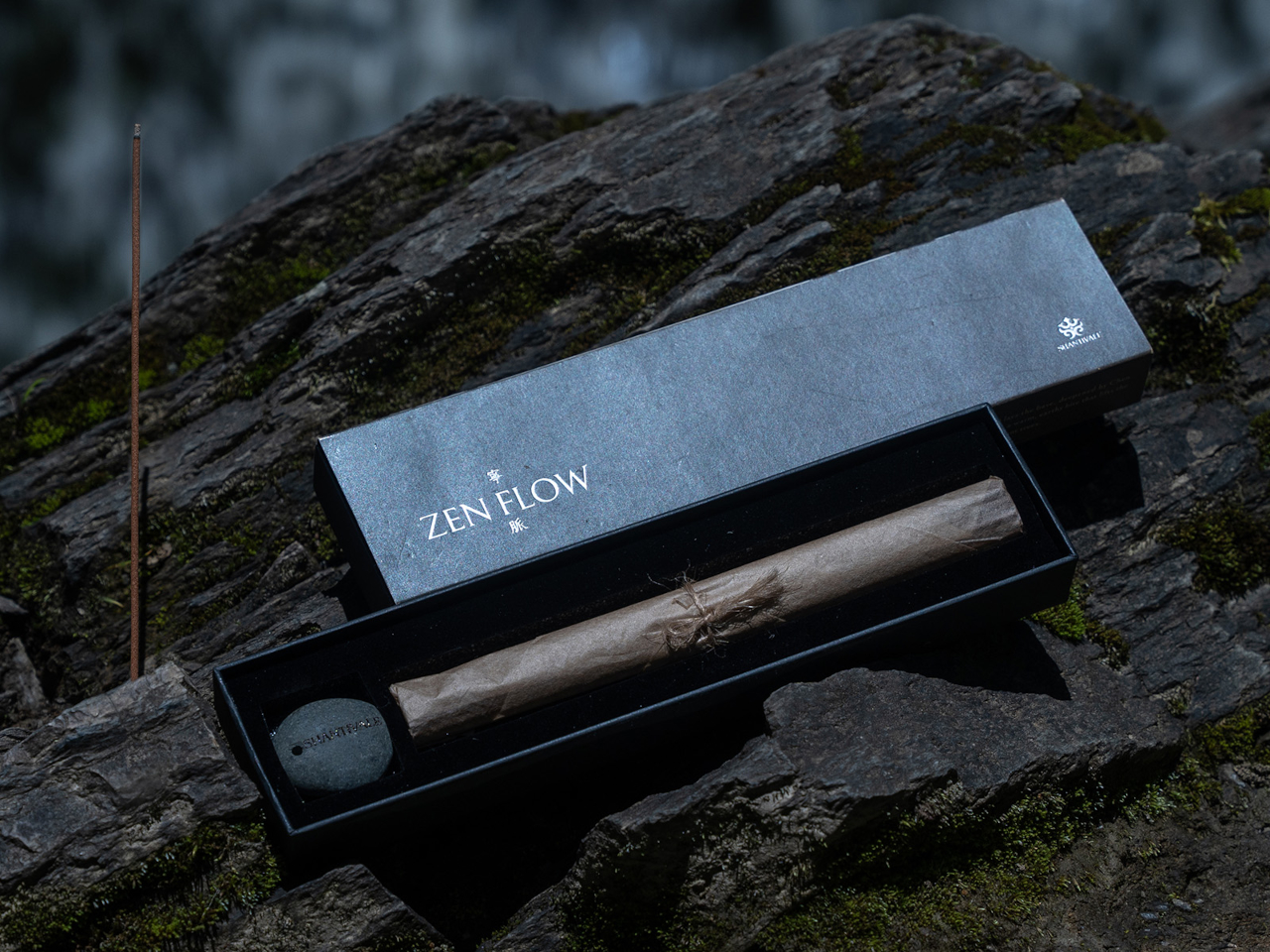
The packaging follows the same restraint. The sticks come in slim boxes wrapped in Xuan paper, echoing Chinese calligraphy and the contemplative flow of ink. Each blend has a bilingual name and a short scent verse, more field guide than vanity jar. The kit includes a carved stone holder inspired by mani stone mounds in the Tibetan highlands, a smooth river stone with a drilled hole that quietly marks faith, time, and the path of smoke.
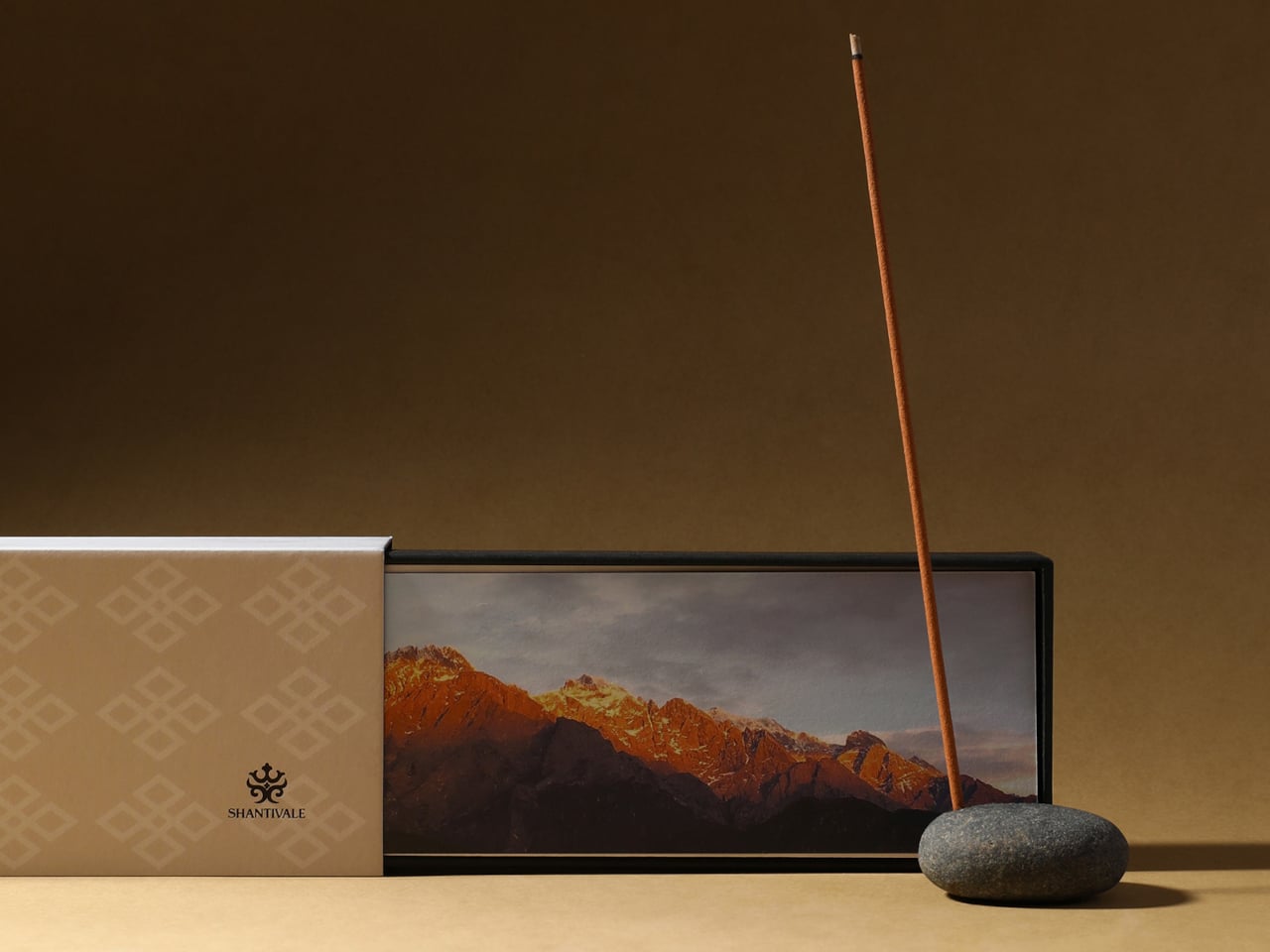
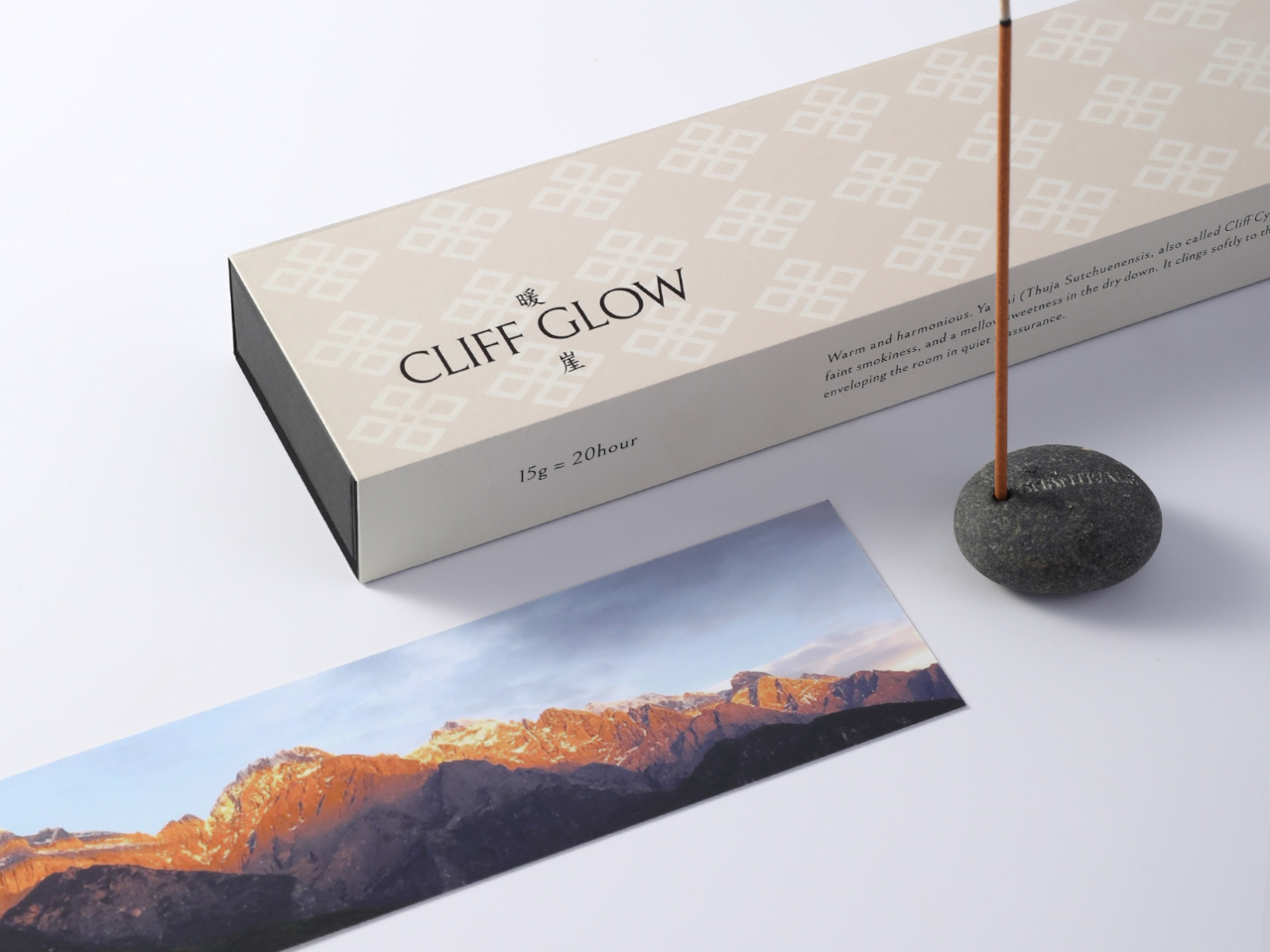
One stick burns for about forty minutes, long enough to bracket a work sprint, a chapter, or an evening wind-down. You light it, fan out the flame, and let it smoulder. The stick ends itself, and the after-feel lingers. In days that blur together, that small ceremony gives minutes a border and offers a natural signal that re-tunes the room’s field to something more breathable and human.
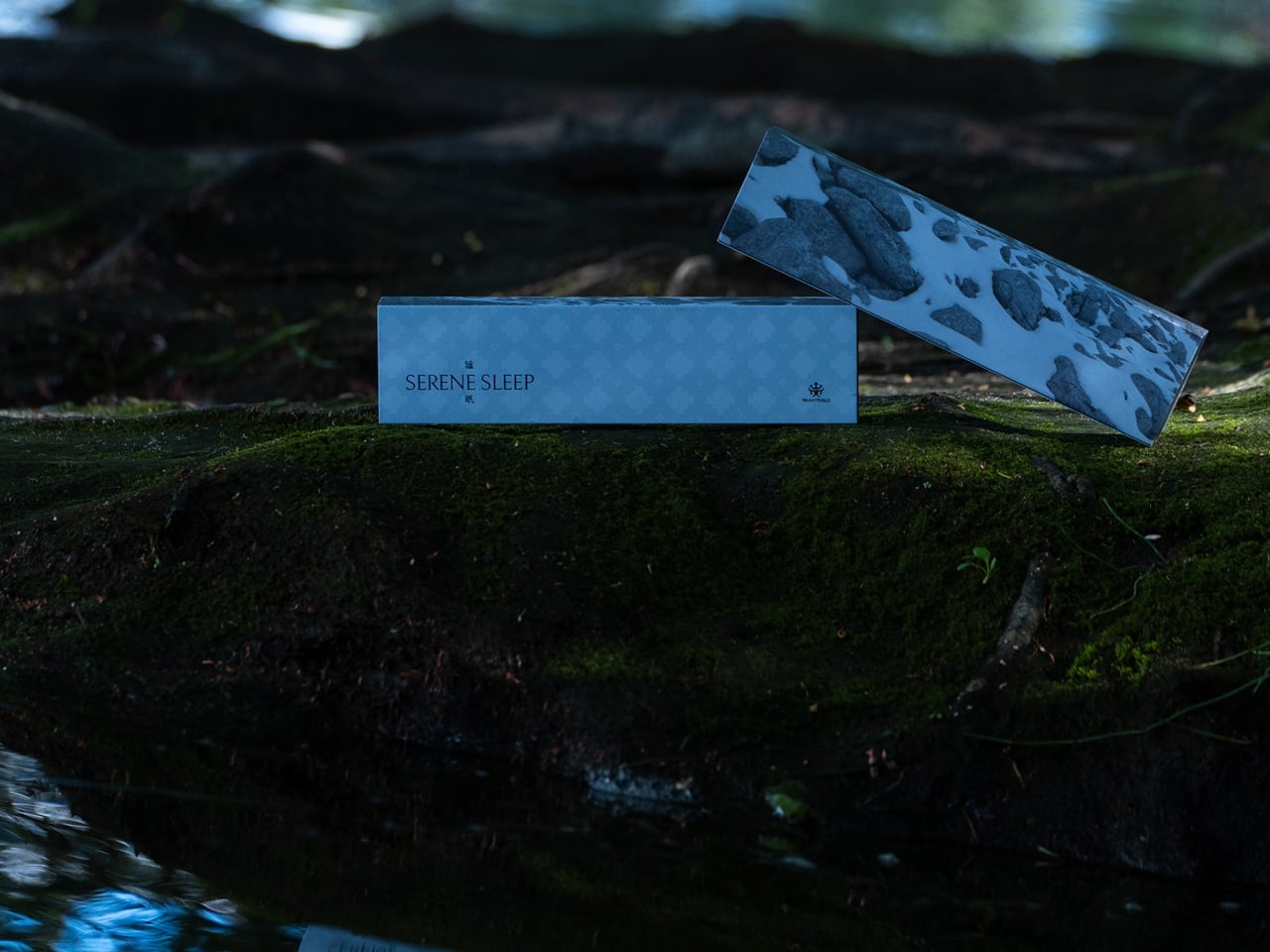
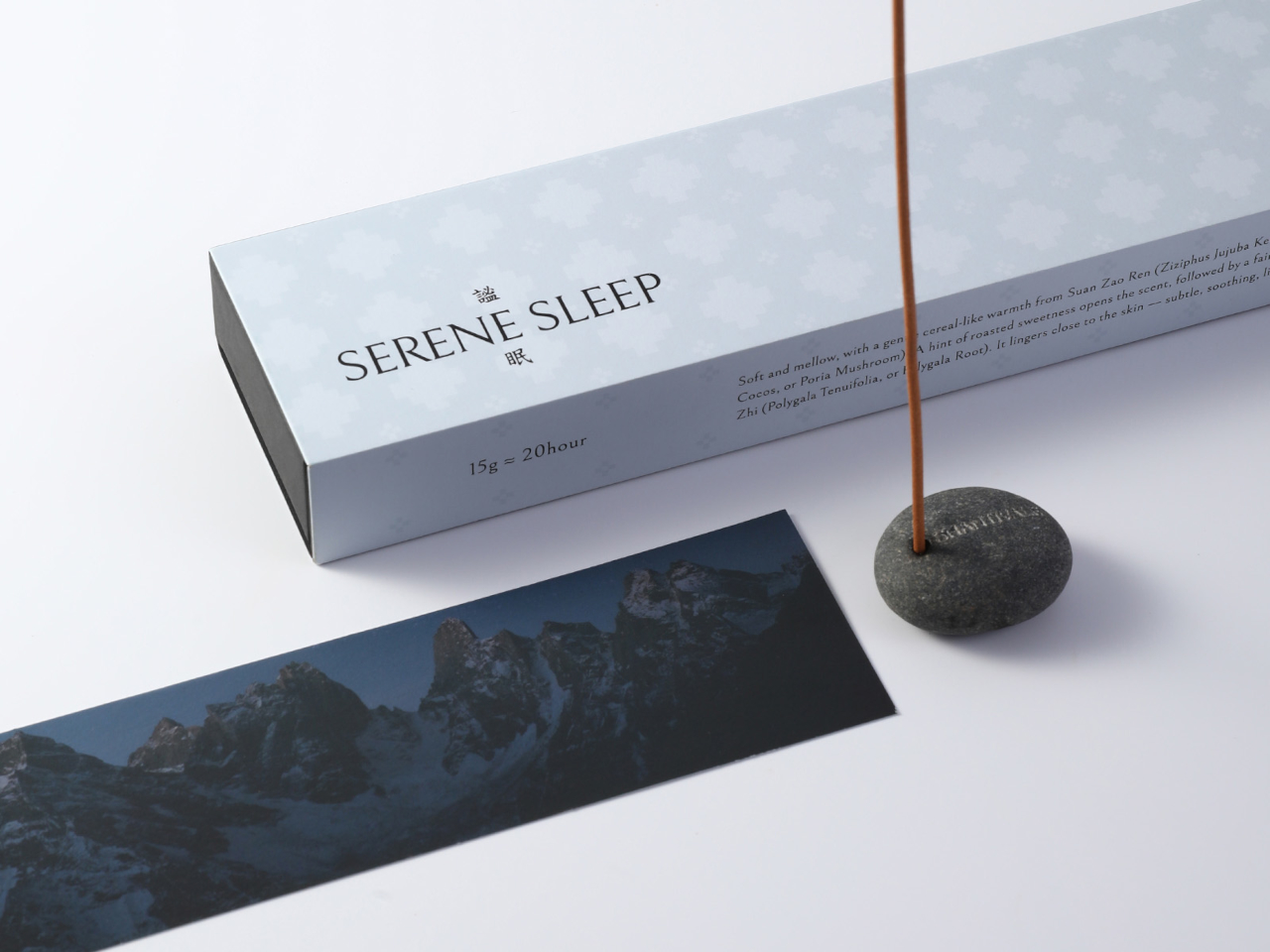
Shantivale is a simple argument: plant-born smoke, cultural pairing, and a small ritual that turns ordinary transitions into moments that feel distinct. For anyone building a signature mood at home or looking for something thoughtful to gift this season, the Tranquil Fivefold kit is worth picking up. Whether for yourself or someone who could use a quieter kind of scent, it’s an object that lingers long after any wrapping paper.
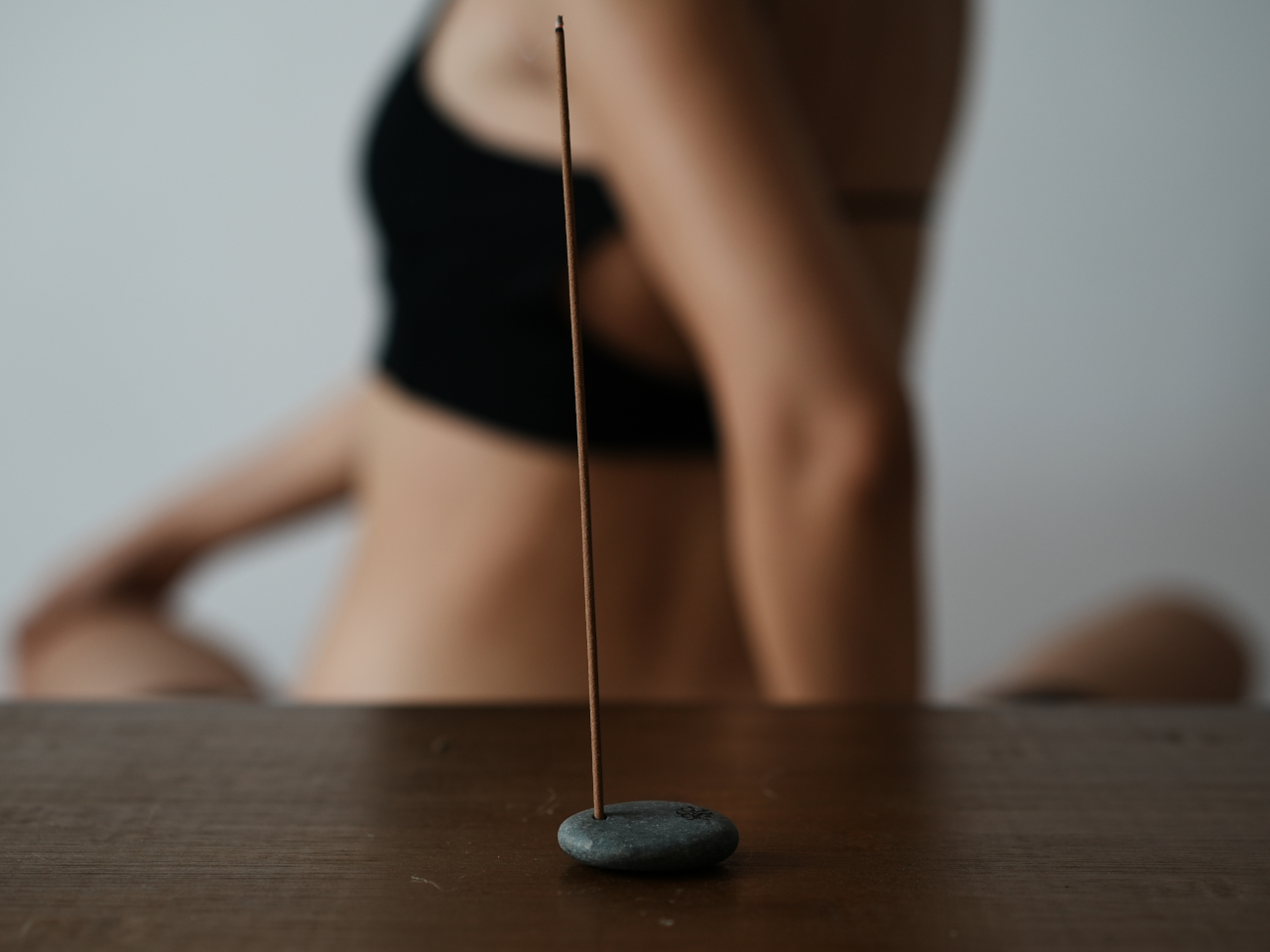
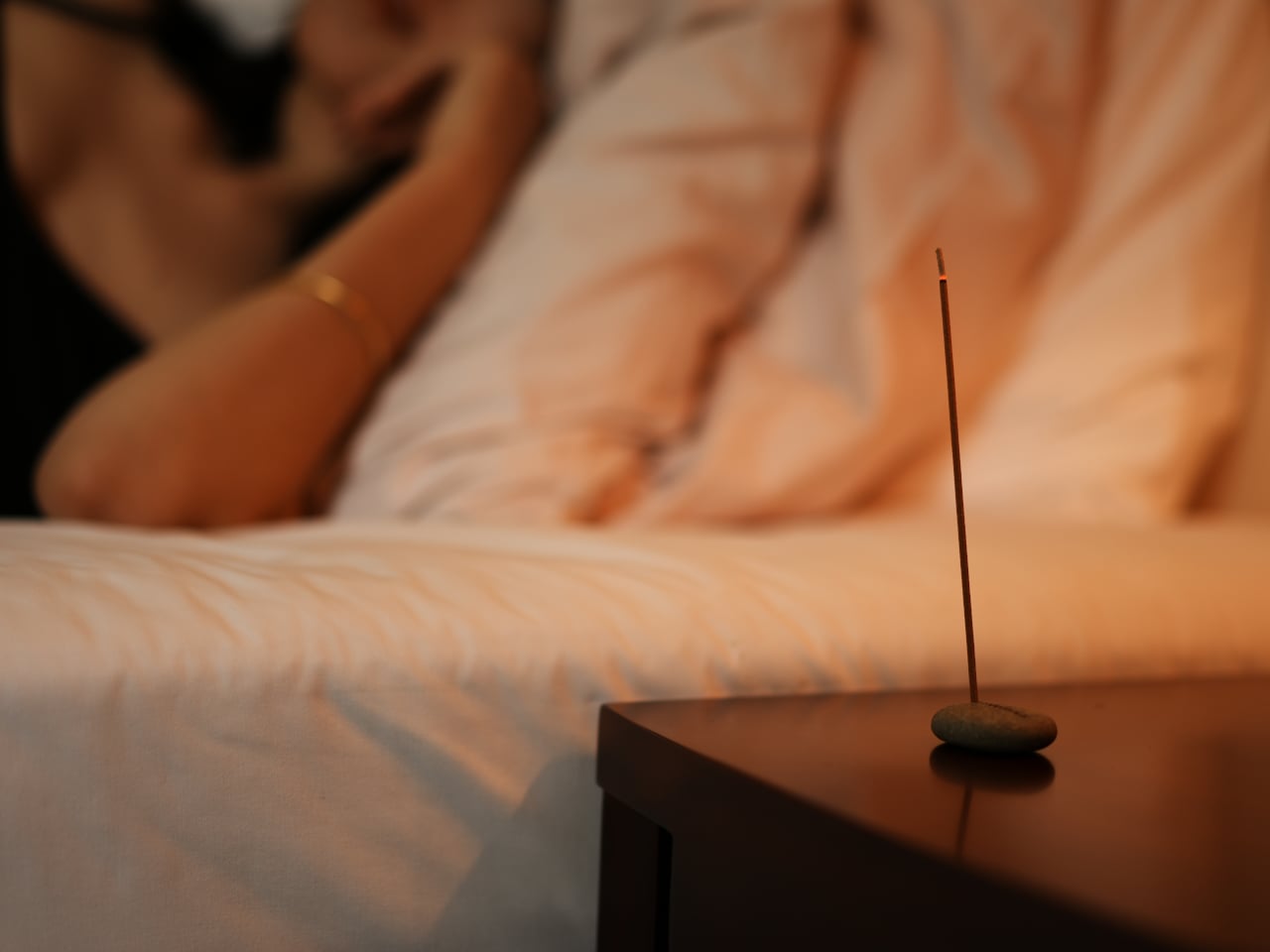
The post Shantivale Incense: 5 Plant-Based Blends Mapped to Times of Day first appeared on Yanko Design.
